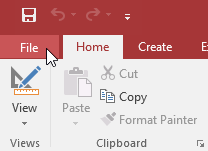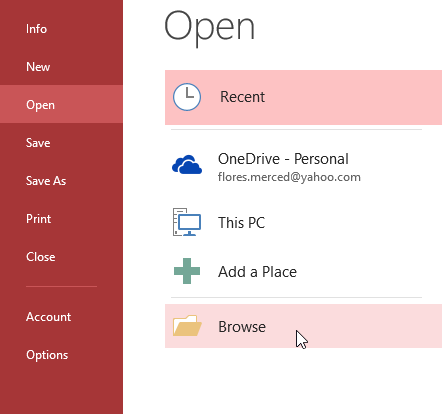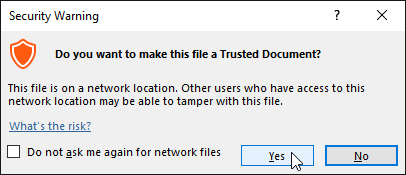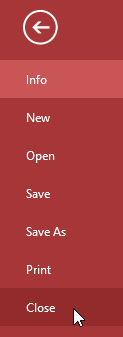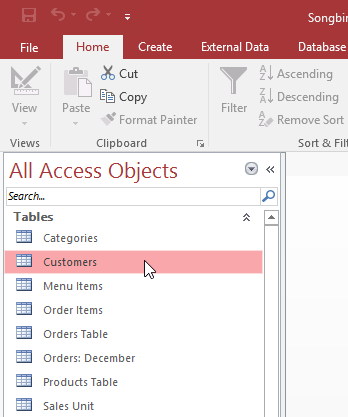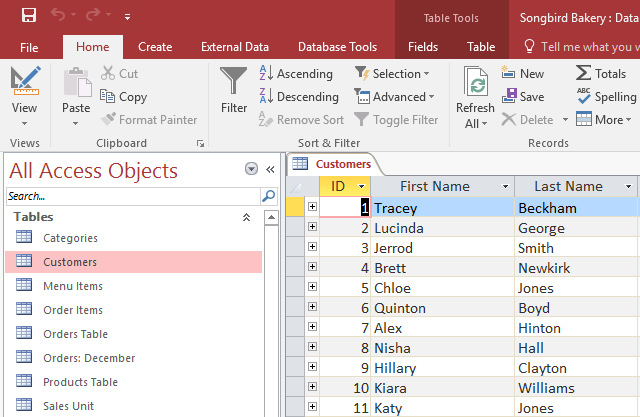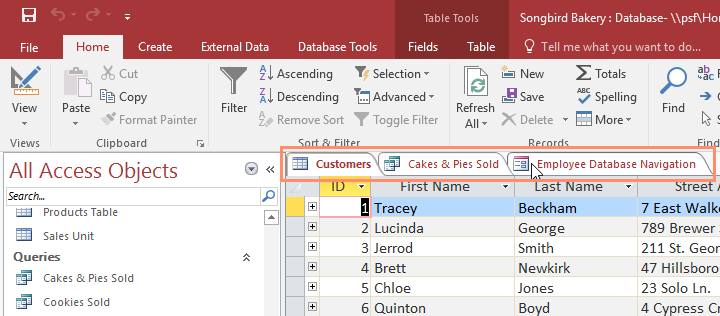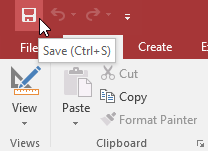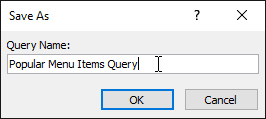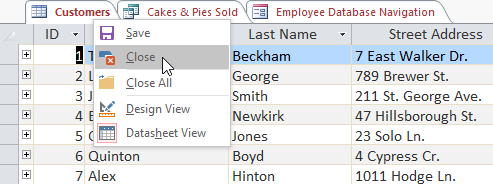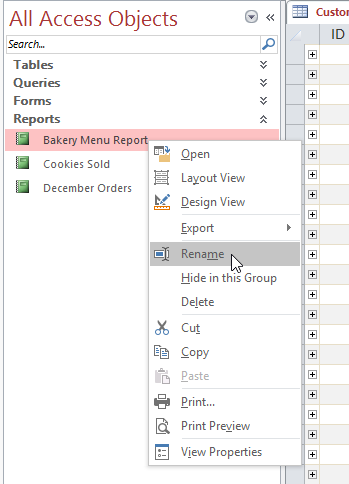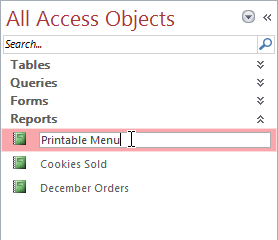Lesson 4: Managing Databases and Objects
/en/access/getting-started-in-access/content/
Introduction
Each Access database consists of multiple objects that let you interact with data. Databases can include forms for entering data, queries for searching within it, reports for analyzing it, and tables for storing it. Whenever you work with your database, you are working with many of these objects at once. Fortunately, Access makes managing these objects fairly simple.
In this lesson, you will learn how to to open and close databases, as well as how to open, close, and save objects.
Watch the video below to learn more about managing databases and objects in Access.
To open an existing database:
Before entering data or modifying objects, you will need to open your database.
- Select the File tab to go to Backstage view.
- Click Open.
- Click Browse.
- The Open dialog box will appear. Locate and select the database, then click Open.
- One or more warning messages may appear when you open your database. If the database contains customized functions, a yellow bar with a security warning may appear below the Ribbon. If you trust the source of your database, click Enable Content for your database to display correctly.
- After enabling all content in the database, you may see a message asking if you want to make the database a Trusted Document. Click Yes if you would like all content to be automatically enabled each time you open the database.
You may also be prompted to sign in to the database. Select your name from the login list. If your name does not appear, click Add User to enter your information.
To close a database:
- Select the File tab to go to Backstage view.
- Select Close.
- If you have any unsaved objects, a dialog box will appear for each one asking if you want to save it. Select Yes to save the object, No to close it without saving, or Cancel to leave your database open.
Working with objects
It's helpful to think of your database as a large binder or folder in which your data is stored. The data itself is contained in database objects. Access treats each of these objects as separate documents, which means you will have to open and save them individually in order to work with them.
You may have noticed that this lesson contains no instructions for saving a database. This is because you cannot save an entire database at once. Instead, you must individually save the objects contained within the database.
To open an object:
- In the Navigation pane, locate and double-click the desired object.
- The object will appear as a tab in the Document Tabs bar.
By default, the most recently opened object will appear in the main window as the current object. To view another open object, click its tab in the Document Tabs bar.
Saving objects
You'll need to save any changes you make to each object before closing your database. Remember, saving early and often can prevent your work from being lost. However, you will also be prompted to save any unsaved work when you attempt to close your database.
To save a new object:
- Select the object you want to save by clicking its tab in the Document Tabs bar.
- Click the Save command on the Quick Access Toolbar, or press Ctrl+S on your keyboard.
- The first time you save an object, you will be prompted to name it. Enter the desired object name, then click OK.
- The object will be saved. Click the Save command again to save any changes to the object.
To close an object:
- Select the object you want to close, then click the X to the right of the Document Tabs bar.
- If there are any unsaved changes to the object, you will be prompted to save it. Select Yes to save, No to close it without saving your changes, and Cancel to leave the object open.
You can also close an object by right-clicking its tab on the Document Tabs bar and selecting Close. Select Close All to close all open objects.
To rename an object:
- If the object you want to rename is open, close it.
- In the Navigation pane, right-click the desired object, then select Rename.
- Type the new object name, then press Enter on your keyboard.
Challenge!
- Open our practice database.
- Open an object.
- Close the object.
- Rename the object.
- Close the database without saving your changes.
/en/access/working-with-tables/content/


